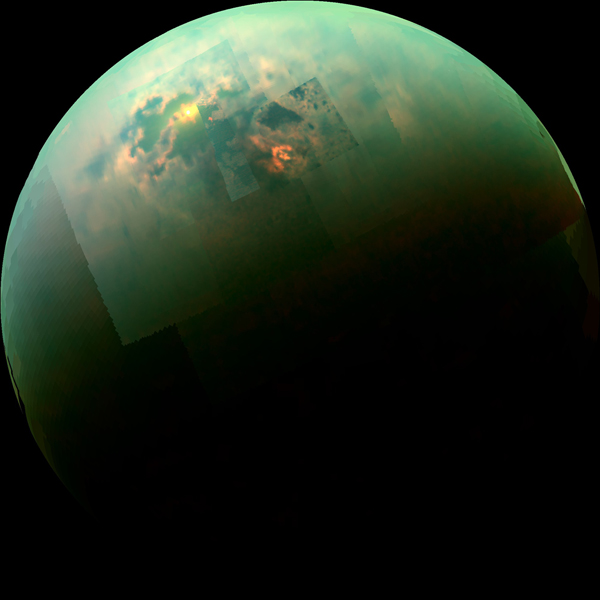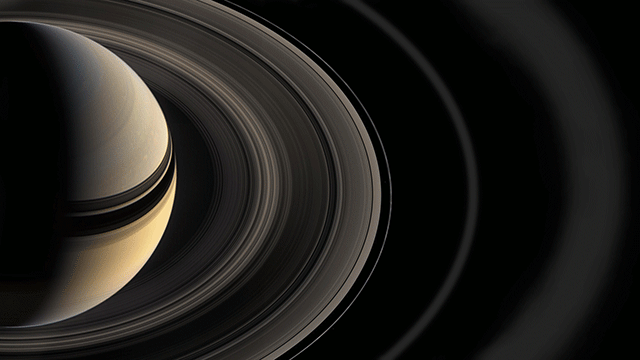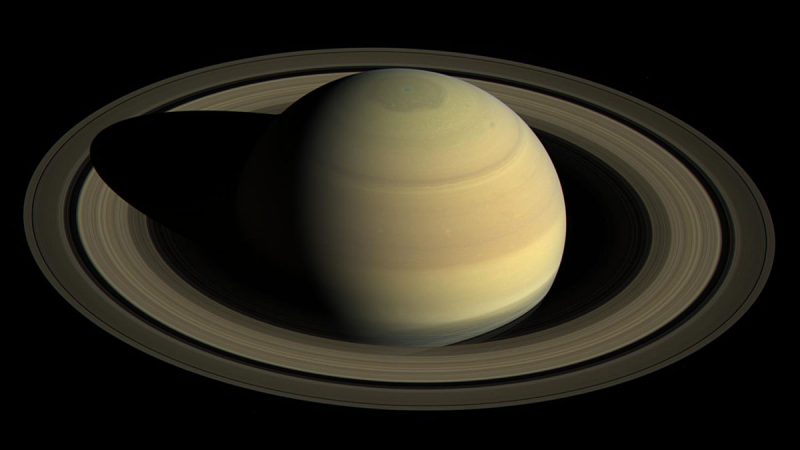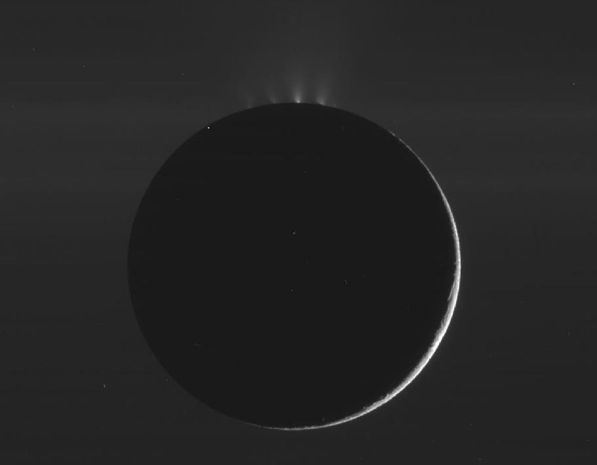While it’s easy to feel nostalgic about the coming end of NASA’s wonderful Cassini mission to Saturn (source of so many incredible images), excitement is now building as the mission prepares to enter its grand finale year in 2017. NASA engineers have been pumping up the spacecraft’s orbit around Saturn this year to increase its tilt with respect to the planet’s equator and rings. On November 30, 2016, following a gravitational nudge from Saturn’s moon Titan, Cassini will go into an orbit that’ll send it just past the unexplored region at the outer edge of Saturn’s main rings. It’ll continue grazing the rings between November 30 and April 22, 2017, circling high over and under the poles of Saturn, diving past the rings every seven days, a total of 20 times. Linda Spilker, Cassini project scientist at NASA’s Jet Propulsion Laboratory, Pasadena, California, said:
We’re calling this phase of the mission Cassini’s Ring-Grazing Orbits, because we’ll be skimming past the outer edge of the rings.
And that’s only the beginning of Cassini’s grand finale in 2017.

First, though, why is the mission ending? Cassini has been in space for nearly 20 years. It launched from Earth in 1997 and has been touring the Saturn system – weaving among the planet’s rings and moons – since 2004. Its discoveries include a global ocean within Enceladus and liquid methane seas on Titan, but even those amazing discoveries pale next to the dramatic consciousness shift space fans have experienced over the years of this mission. Prior to Cassini, we had only glimpsed Saturn and its rings and moons. Now we see them, in all their intricate and profound beauty.
But, now, the Cassini spacecraft is running low on fuel. And so the mission must end, but not before it run through a year-long lists of “firsts” at Saturn. That’s following a series of “lasts,” by the way, related to Saturn’s moons, in 2016.
Simply put, before its end, Cassini has more science to do. For example, on many of the upcoming passes through the ringplane, Cassini’s instruments will attempt to sample ring particles and molecules of faint gases close to the rings, directly. Linda Spilker said:
… we have two instruments that can sample particles and gases as we cross the ringplane, so in a sense Cassini is also ‘grazing’ on the rings.

During the first two orbits, the spacecraft will pass directly through an extremely faint ring produced by tiny meteors striking the two small moons Janus and Epimetheus. Ring crossings in March and April will send the spacecraft through the dusty outer reaches of the F ring. Earl Maize, Cassini project manager at JPL, said:
Even though we’re flying closer to the F ring than we ever have, we’ll still be more than 4,850 miles (7,800 km) distant. There’s very little concern over dust hazard at that range.
The concern about dust will increase, though, after April, as Cassini executes the later phases of its grand finale. Ultimately, Cassini will pass as close as 1,012 miles (1,628 km) above Saturn’s cloudtops as it dives repeatedly through the narrow gap between Saturn and its rings.
The mission’s planned end will come on September 15, 2017, when the spacecraft will plunge into Saturn’s dense atmosphere.

For now, though, NASA says, some preparatory work remains:
To begin with, Cassini is scheduled to perform a brief burn of its main engine during the first super-close approach to the rings on December 4. This maneuver is important for fine-tuning the orbit and setting the correct course to enable the remainder of the mission…
To further prepare, Cassini will observe Saturn’s atmosphere during the ring-grazing phase of the mission to more precisely determine how far it extends above the planet. Scientists have observed Saturn’s outermost atmosphere to expand and contract slightly with the seasons since Cassini’s arrival. Given this variability, the forthcoming data will be important for helping mission engineers determine how close they can safely fly the spacecraft.
Read more about the plan to ring-graze, and Cassini’s grand finale, from NASA

Bottom line: The Cassini spacecraft has been shifting its orbit throughout 2016, preparing for the mission’s grand finale in 2017. On November 30, it’ll begin a series of 20 orbits that fly high above and below Saturn’s poles, plunging just past the outer edge of the main rings.











